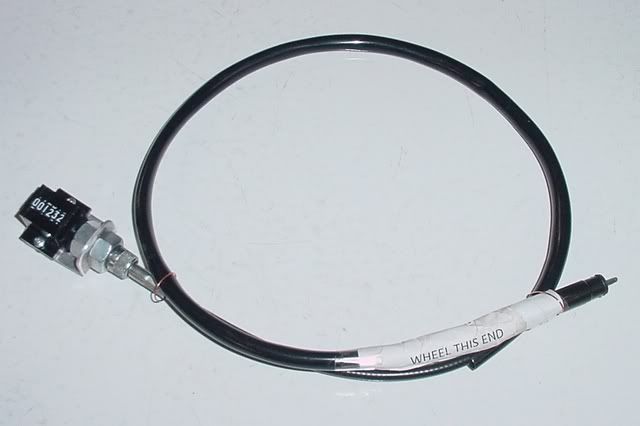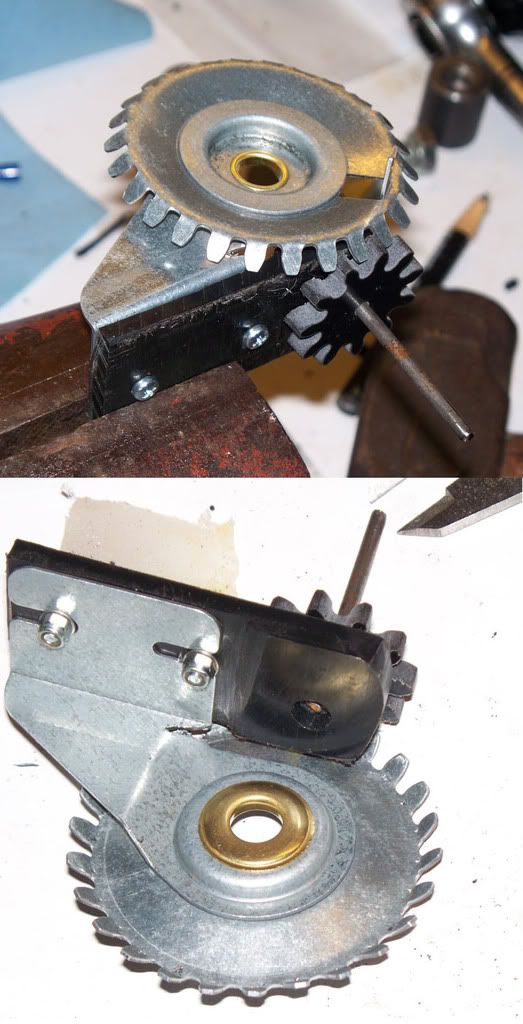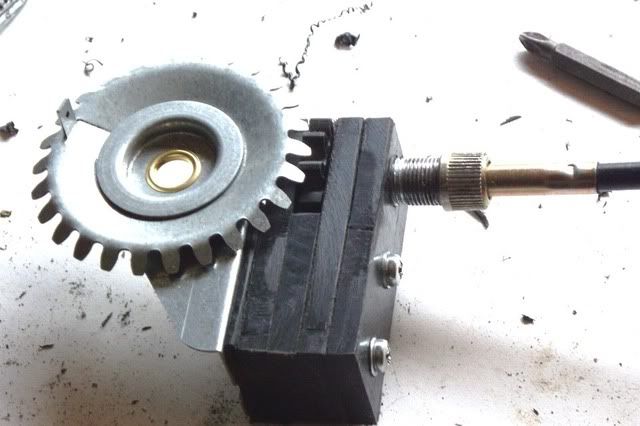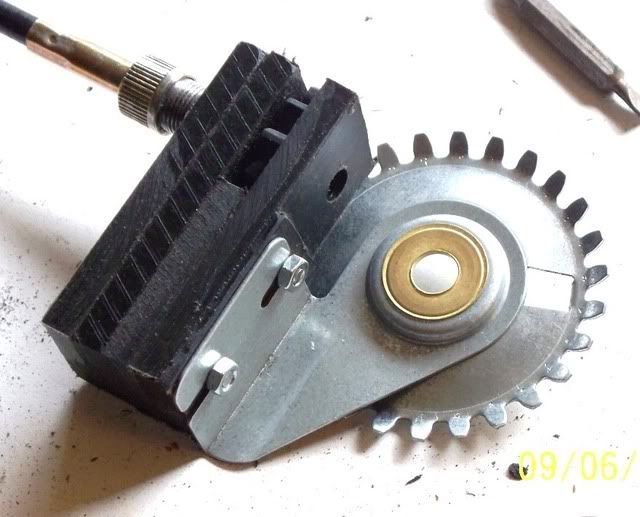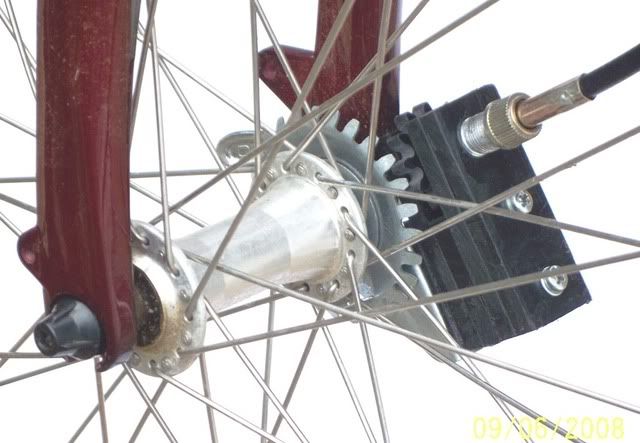I got all the pieces/parts I ordered, and cobbled together a complete cable-mounted counter.
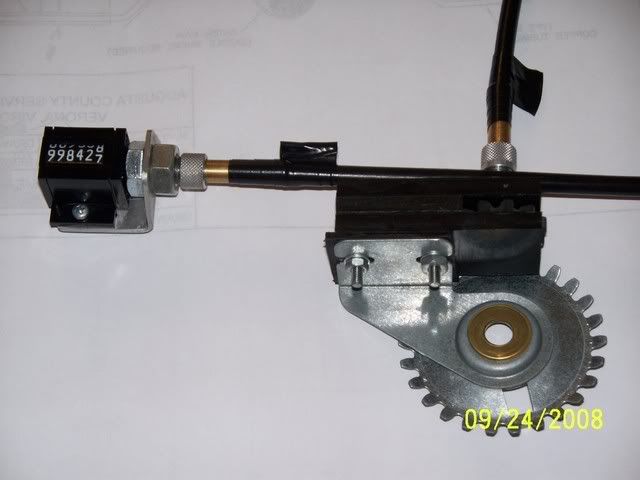
The threaded nut used to join the speedometer cable to the counter and chassis is a M10x1.0mm bolt, 40mm long that must be counterbored with a 6mm hole and cut roughly in half. Here are most of the pieces in the disassembled state.
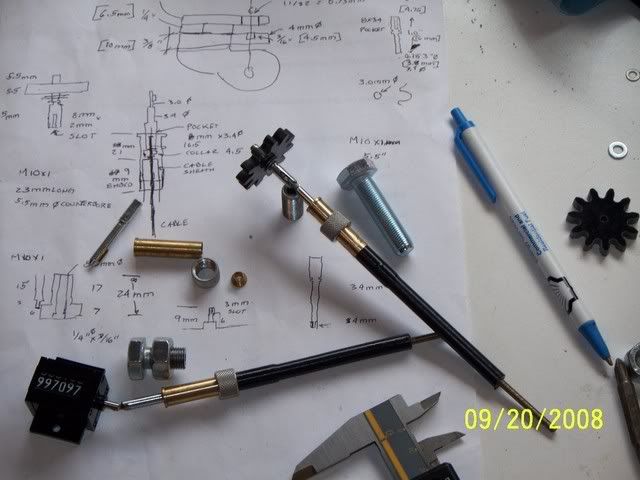
The cable-ends that transfer the rotation start out as 0.156", and must be whittled down with a dremel tool to fit on either end. The notch in the Veeder-Root counter must also be enlarged to receive the modified cable-end, and this can be done with a Dremel tool as well. Extreme care must be taken not to get the counter shaft too hot during the grinding operation or I risk fusing the gears inside. A shot of fluid from a can of "canned air" held upside-down cools things off nicely after a bit of grinding.
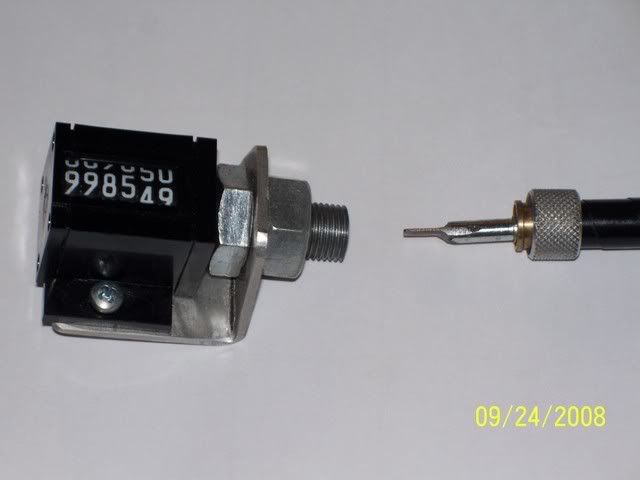
The chassis is to be mounted on the right side of the wheel with the cable routed above the fork, and the counter will mount on the left handlebar.
Overall I am quite satisfied with the gear engagement, and smoothness of operation. The same counter, chassis, and gear from the base model can be used with minor modifications, so little additional stock must be acquired beyond the cable pieces and plastic blocks.
I'll put a few miles on it this weekend if the weather holds (doesn't look too promising) and post my findings.
Best,
Tom
